A poll tax, also known as head tax or capitation, is a tax levied as a fixed sum on every liable individual, without reference to income or resources. Poll is an archaic term for "head" or "top of the head". The sense of "counting heads" is found in phrases like polling place and opinion poll.
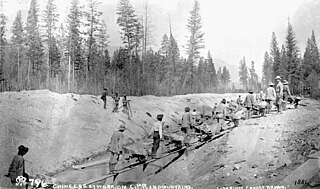
Chinese immigrants began settling in Canada in the 1780s. The major periods of Chinese immigration would take place from 1858 to 1923 and 1947 to the present day, reflecting changes in the Canadian government's immigration policy.
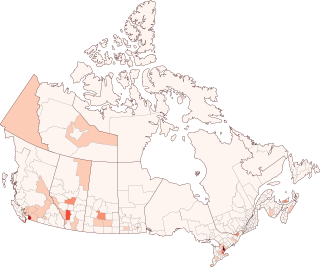
Chinese Canadians are Canadians of full or partial Han Chinese ancestry, which includes both naturalized Chinese immigrants and Canadian-born Chinese. They comprise a subgroup of East Asian Canadians which is a further subgroup of Asian Canadians. Demographic research tends to include immigrants from Mainland China, Taiwan, Hong Kong, and Macau, as well as overseas Chinese who have immigrated from Southeast Asia and South America into the broadly defined Chinese Canadian category.
Taishanese, alternatively romanized in Cantonese as Toishanese or Toisanese, in local dialect as Hoisanese or Hoisan-wa, is a Yue Chinese dialect native to Taishan, Guangdong.

This article discusses Chinatowns in Oceania.
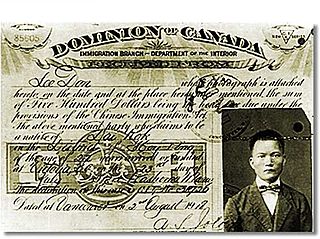
The Chinese head tax was a fixed fee charged to every Chinese person entering Canada. The head tax was first levied after the Canadian parliament passed the Chinese Immigration Act of 1885 and it was meant to discourage Chinese people from entering Canada after the completion of the Canadian Pacific Railway (CPR). The tax was abolished by the Chinese Immigration Act of 1923, which outright prevented all Chinese immigration except for that of business people, clergy, educators, students, and some others.
The Chinese Immigration Act, 1923, also known as the "Chinese Exclusion Act", was a Canadian Act of Parliament passed by the government of Liberal Prime Minister William Lyon Mackenzie King, banning most forms of Chinese immigration to Canada. Immigration from most countries was controlled or restricted in some way, but only the Chinese were completely prohibited from immigrating to Canada.

Pansy Yu Fong Wong is a New Zealand former politician.
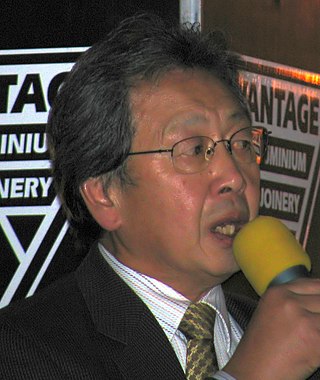
Peter Wing Ho Chin, CNZM is a lawyer and was the 56th Mayor of Dunedin, New Zealand. He served two terms as Mayor from 2004 to 2010.

The Chinese Immigration Act, 1885 was an act of the Parliament of Canada that placed a head tax of $50 on all Chinese immigrants entering Canada. It was based on the recommendations of the Royal Commission on Chinese Immigration, which were published in 1885.

Chinese New Zealanders or Sino-New Zealanders are New Zealanders of Chinese ancestry. The largest subset of Asian New Zealanders, many of the Chinese immigrants came from Mainland China, Hong Kong, Taiwan, or other countries that have large populations of Chinese diaspora. Today's Chinese New Zealand group is also composed of diasporic communities from Indonesia, Malaysia, Cambodia, Vietnam and Singapore. As of 2018, Chinese New Zealanders account for 4.9% of the population of New Zealand, and are the largest Asian ethnic group in New Zealand, accounting for 36.3% of Asian New Zealanders.
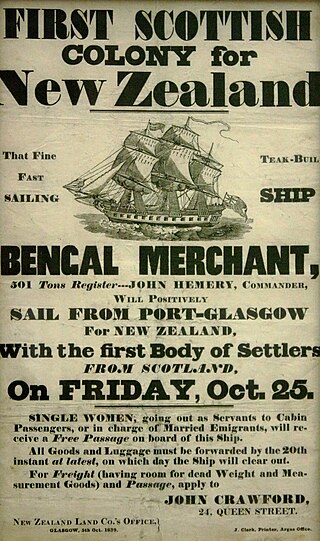
Migration to New Zealand began only very recently in human history, with Polynesian settlement in New Zealand, previously uninhabited, about 1250 CE to 1280 CE. European migration provided a major influx, especially following the signing of the Treaty of Waitangi in 1840. Subsequent immigrants have come chiefly from the British Isles, but also from continental Europe, the Pacific, the Americas and Asia.

The Fifth Labour Government of New Zealand was the government of New Zealand from 10 December 1999 to 19 November 2008. Labour Party leader Helen Clark negotiated a coalition with Jim Anderton, leader of the Alliance Party. While undertaking a number of substantial reforms, it was not particularly radical compared to previous Labour governments.

Helen Elizabeth Clark is a New Zealand politician who served as the 37th prime minister of New Zealand from 1999 to 2008 and was the administrator of the United Nations Development Programme from 2009 to 2017. She was New Zealand's fifth-longest-serving prime minister, and the second woman to hold that office.

Chinese, including Mandarin and Cantonese among other varieties, is the third most-spoken language in the United States, and is mostly spoken within Chinese-American populations and by immigrants or the descendants of immigrants, especially in California and New York. Around 2004, over 2 million Americans spoke varieties of Chinese, with Mandarin becoming increasingly common due to immigration from mainland China and to some extent Taiwan. Within this category, approximately one third of respondents described themselves as speaking Cantonese or Mandarin specifically, with the other two thirds answering "Chinese", despite the lack of mutual intelligibility between different varieties of Chinese. This phenomenon makes it more difficult to readily identify the relative prevalence of any single Chinese language in the United States.

The New York metropolitan area is home to the largest and most prominent ethnic Chinese population outside of Asia, hosting Chinese populations representing all 34 provincial-level administrative units of China. The Chinese American population of the New York City metropolitan area was an estimated 893,697 as of 2017, constituting the largest and most prominent metropolitan Asian national diaspora outside Asia. New York City itself contains by far the highest ethnic Chinese population of any individual city outside Asia, estimated at 628,763 as of 2017.

Historically there has been a population of Chinese Americans in Los Angeles and the Los Angeles Metropolitan Area. As of 2010, there were 393,488 Chinese Americans in Los Angeles County, 4.0% of the county's population, and 66,782 Chinese Americans in the city of Los Angeles.
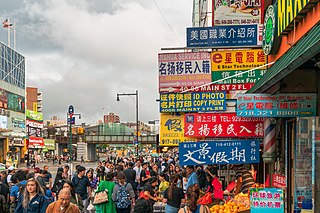
There are multiple Chinatowns in the borough of Queens in New York City. The original Queens Chinatown emerged in Flushing, initially as a satellite of the original Manhattan Chinatown, before evolving its own identity, surpassing in scale the original Manhattan Chinatown, and subsequently, in turn, spawning its own satellite Chinatowns in Elmhurst, Corona, and eastern Queens. As of 2023, illegal Chinese immigration to New York has accelerated, and its Flushing neighborhood has become the present-day global epicenter receiving Chinese immigration as well as the international control center directing such migration. As of 2024, a significant new wave of Chinese Muslims is fleeing religious persecution in northwestern China’s Xinjiang Province and seeking religious freedom in New York, and concentrating in Queens.
Chinese Voice is a Cantonese, Mandarin and English language radio network based in Auckland, New Zealand. It is a wholly owned subsidiary of Best News Entertainment, an Asian language television, print and radio company, and consists of three station set up between 2003 and 2010. It produces more than 80 hours of local content each week, including live talkback on news stories, migrant issues, political developments and dealing with New Zealand Government agencies. The stations also broadcast imported talk and music programmes from China and Hong Kong.
The dawn raids were crackdowns in New Zealand from 1973 to 1979 and then sporadically afterward on alleged illegal overstayers from the Pacific Islands. The raids were first introduced in 1973 by Prime Minister Norman Kirk's Labour government, who discontinued them in April 1974. However, they were later reintroduced and intensified by Rob Muldoon's Third National government. These operations involved special police squads conducting often aggressive raids on the homes and workplaces of overstayers throughout New Zealand, usually at dawn and almost exclusively directed at Pasifika New Zealanders, regardless of their citizenship status. Overstayers and their families were often prosecuted and then deported back to their countries.